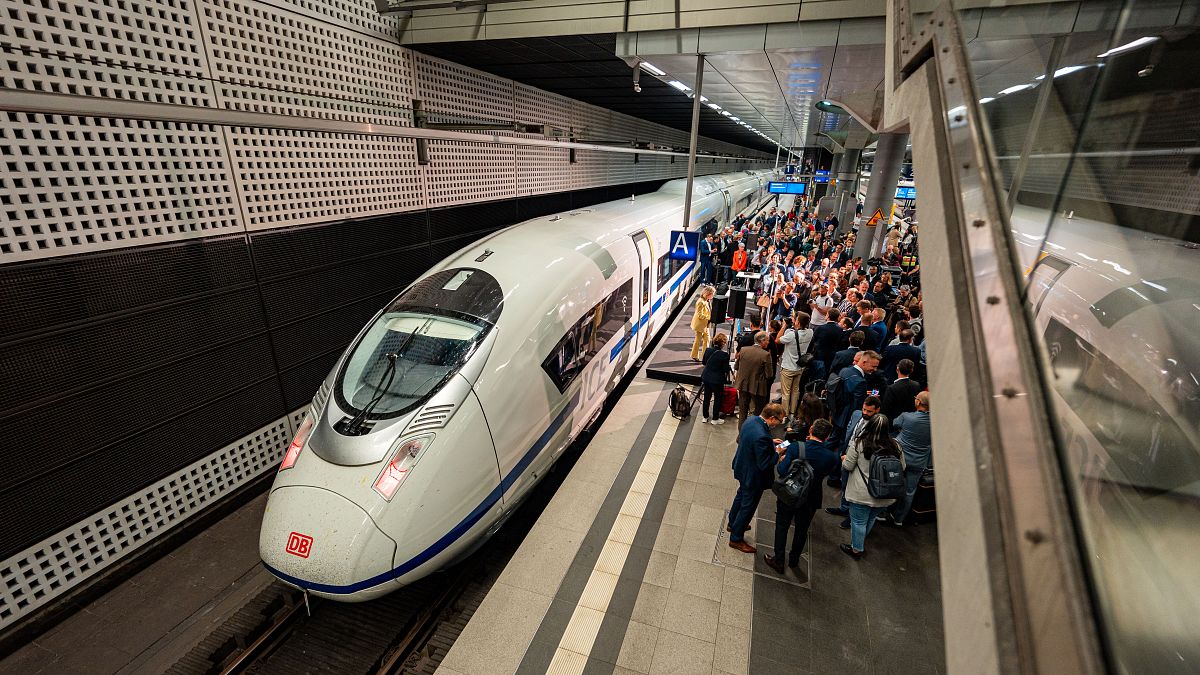On Monday, rail sector specialists spent a six-hour train ride attempting to figure out how to fix a network that’s fragmented, expensive and arguably holding back European growth.
The EU’s plan to boost cross-border rail will take some serious investment, as it won’t be easy to speed up a network that’s currently sluggish and poorly-connected.
The European rail sector got together on Monday (23 September) to discuss that issue — and where better to do so than on a six-hour rail trip?
During the trip from Brussels to Berlin, coffee and conversations flowed among over 230 participants on how to get the continent on a par with its peers.
Green MEP Tilly Metz believes creating a high-speed network is possible — but requires better coordination.
“It’s really a question of political will because the money could be there. We just need a coherent approach,” she said; in her home country of Luxembourg, public transport is free.
The EU’s Green Deal to curb climate change offers to double the volume of European high-speed rail by 2030, and triple it by 2030.
But it’s clear there’s a mountain to climb.
China currently boasts over 37,900 kilometres of rail lines linking major cities: to create the equivalent in Europe would mean constructing and upgrading over 21,000 kilometres of track, according to German operator Deutsche Bahn.
Yet some worry the continent’s current hodgepodge of national rail networks is holding the economy back.
The lack of high-speed rail between European capitals “is a profound contradiction, emblematic of the problems of the single market”, former Italian Prime Minister Enrico Letta said in a report earlier this year outlining plans to boost EU prosperity.
Fixing the problem “must become one of the pillars of the fair, green, and digital transition”, he added.
He’s not the first to point that out. A 2018 report from the European Court of Auditors described the network as “an ineffective patchwork of national lines not well-linked,’’ as the European Commission can’t force member states to build routes.
There’s a potential economic benefit: a high-speed network could create 1.5 million jobs, trigger €750bn in economic gains and cut carbon dioxide emissions by 5bn tonnes, according to the Community of European Railway and Infrastructure Companies.
So why is it not happening?
Georges Gilkinet, Belgium’s mobility minister, said the EU needs to implement a “more efficient network,” and called on the Commission to offer more train subsidies.
“This would provide a fairer level of competition between planes and trains by lowering the cost of train tickets”, he told Euronews. “We have to support the greenest one, which is the train.”
Europe’s current transport infrastructure still encourages people to fly rather than take the more environmentally friendly train, recent research from lobby group Greenpeace has found, with 69% of intercity routes served by direct flights, and just 12% by train.
In France and Belgium, train travel is on average 2.6 times more expensive than flying, and in Spain it is four times higher, according to Greenpeace.
Jon Worth, a rail expert and blogger, said the major challenge is a lack of infrastructure and ticketing.
He encourages the incoming EU Commissioner for transport and tourism — set to be Greece’s Apostolos Tzitzikostas — to try to travel across the EU via train to appreciate the scale of the problem.
“Plenty of places have more capacity, but, for different political reasons, crossing borders by train is hard because it is not the political priority,” he said. “That is why I want more political action from the EU.”

